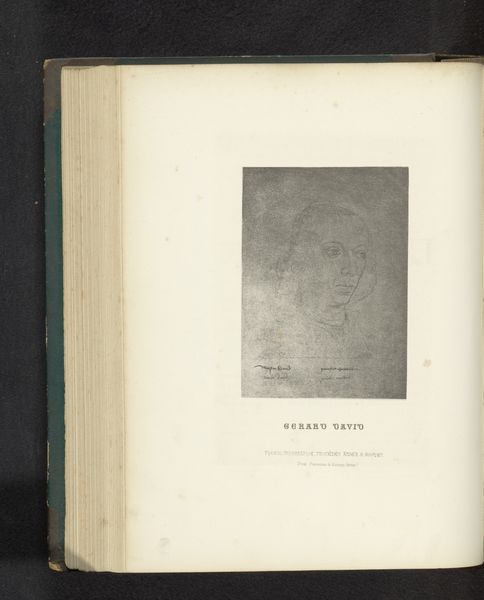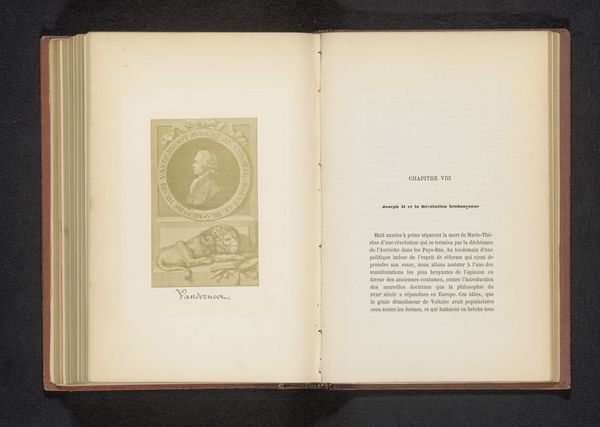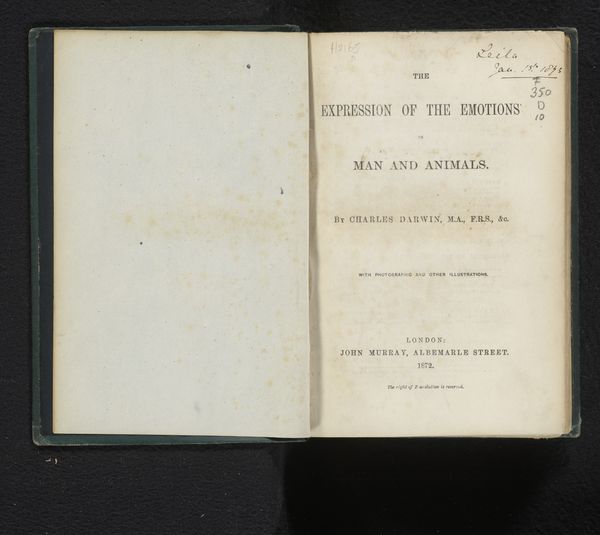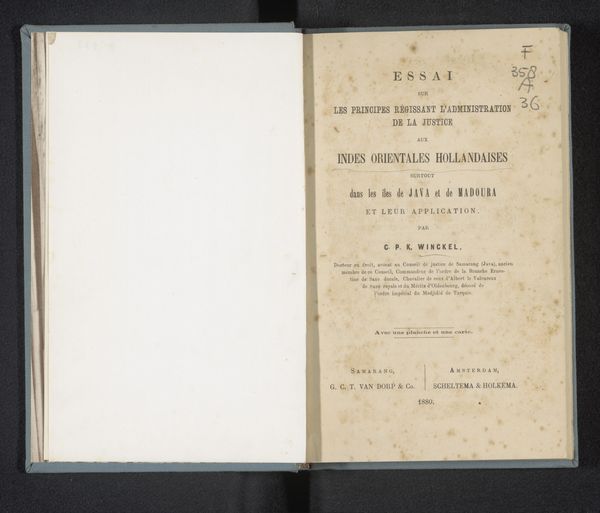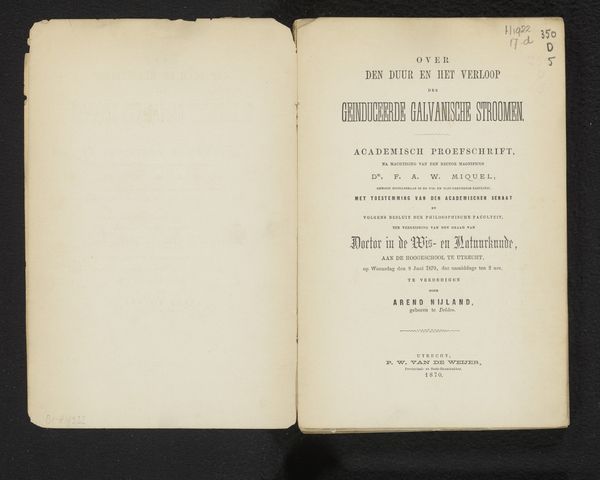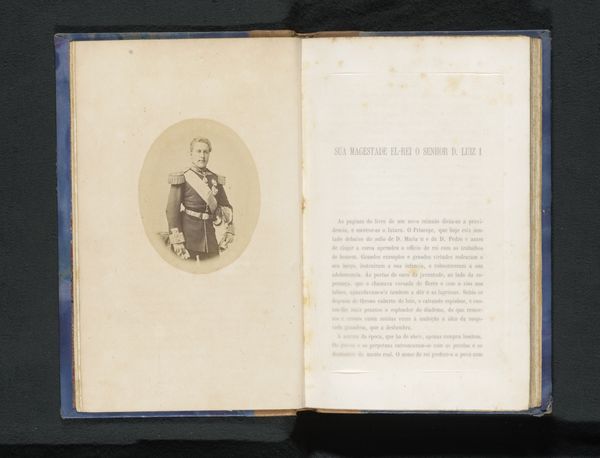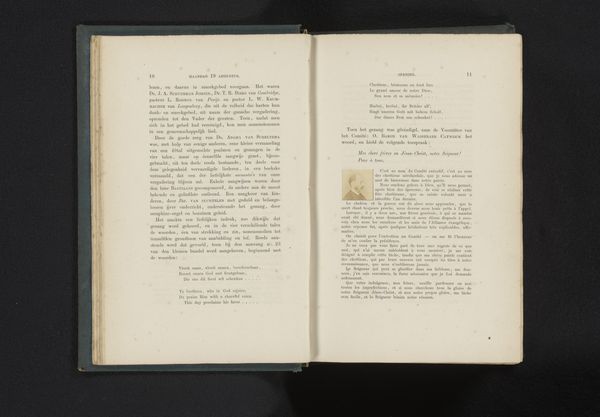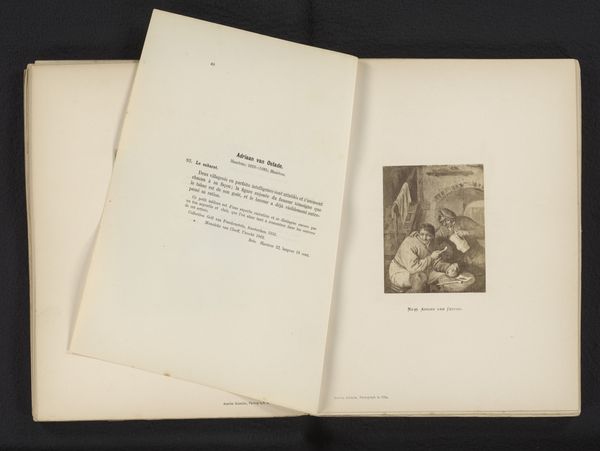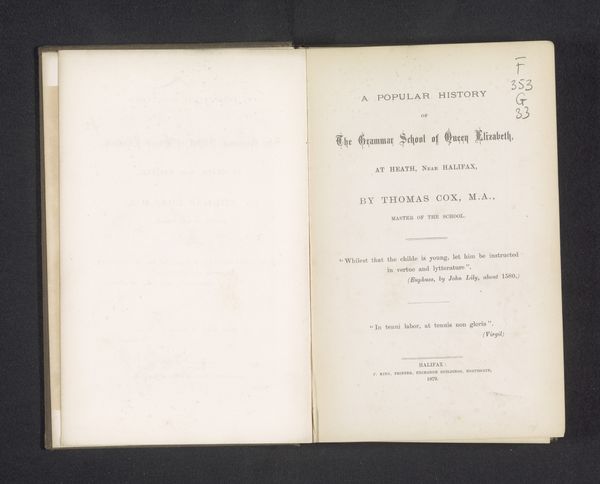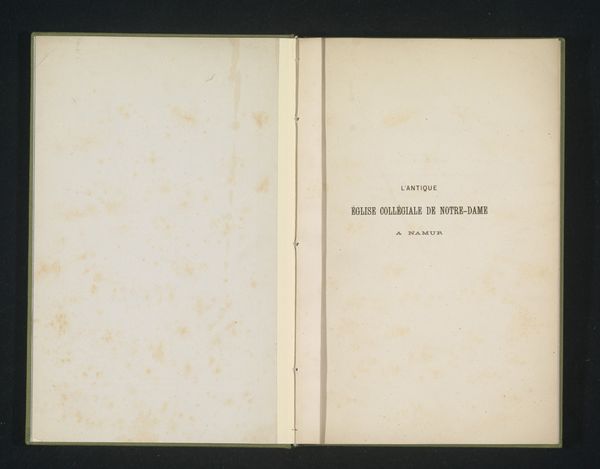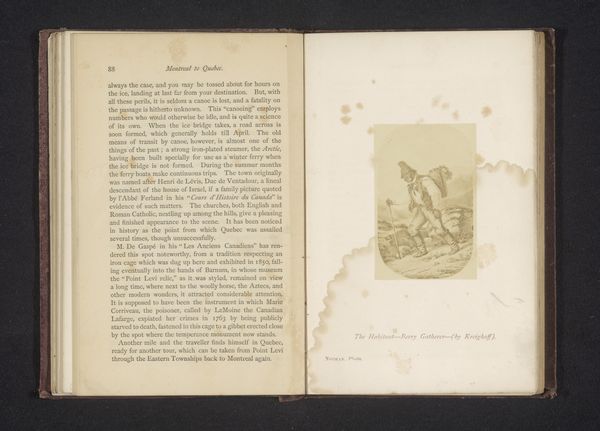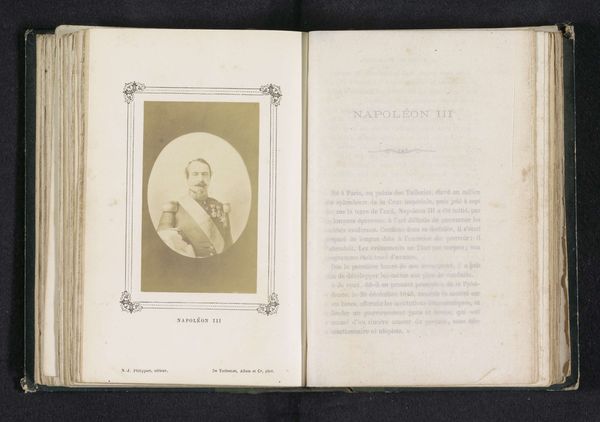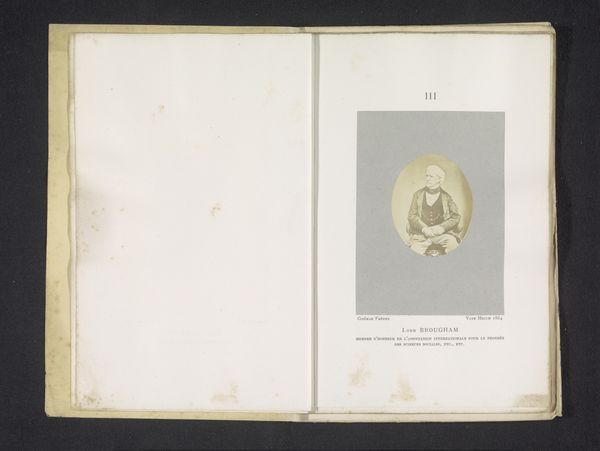
Dimensions: height 145 mm, width 113 mm, thickness 24 mm
Copyright: Rijks Museum: Open Domain
Curator: At first glance, the image is like holding a ghost, a whisper of another time, don't you think? Pale paper, gothic font… evokes a sentimental Victorian mood, a kind of pious quiet. Editor: This is a print from a book titled "The Way Home," dating back to 1855 and produced by John Greig & Son, Edinburgh. It blends typography, image, and textile qualities with its aged paper texture. A lovely example of nineteenth-century print production and visual culture, particularly surrounding sentimental, religious themes. Curator: Sentimental, yes! That delicate oval image opposite the title page… it's faded, a ghostly vignette. Looks like a mother and child, enveloped in an ethereal mist. Does the text "I will dwell in the house of the Lord forever," seal the deal of Romantic religiosity for you, too? Editor: Absolutely, it perfectly captures a mid-19th century idealization of home as a sacred space. Think of the context—rapid industrialization, urbanization drawing people away from rural communities. This image romanticizes domestic life as a refuge from these shifts, aligning with broader cultural anxieties and aspirations surrounding stability. Curator: So the home as haven against the chaos? It really worked, judging by the enduring popularity of similar imagery! Though, personally, the formal, columned typeface combined with the thick, historical font and handmade paper gives the simple message a deeper, slightly melancholic resonance. Editor: I see your point, especially with the fading type on the page; it all contributes to that sentimental texture. Also, the reference code in the upper right corner hints at this book having some institutional past: we are perhaps looking at this book from an archival setting. What would this artwork represent within such archives? Curator: Yes, like finding a dried flower pressed between the pages of history, it embodies the spirit of the age. I can imagine this nestled in the family's personal sketchbooks; perhaps it held significance within the family history, marking personal journeys towards familial belonging and meaning, much like the text claims "the way home". Editor: Precisely, in a way, this one spread captures both public sentiments and intimate individual experiences and shows how publications could become both personal keepsakes and carriers of cultural messaging. It provides a valuable perspective into how art was experienced. Curator: Makes me want to curl up with a cup of tea and daydream about simpler times. Perhaps "The Way Home" leads us to discover such things and feel like there is something universal there, after all.
Comments
No comments
Be the first to comment and join the conversation on the ultimate creative platform.
